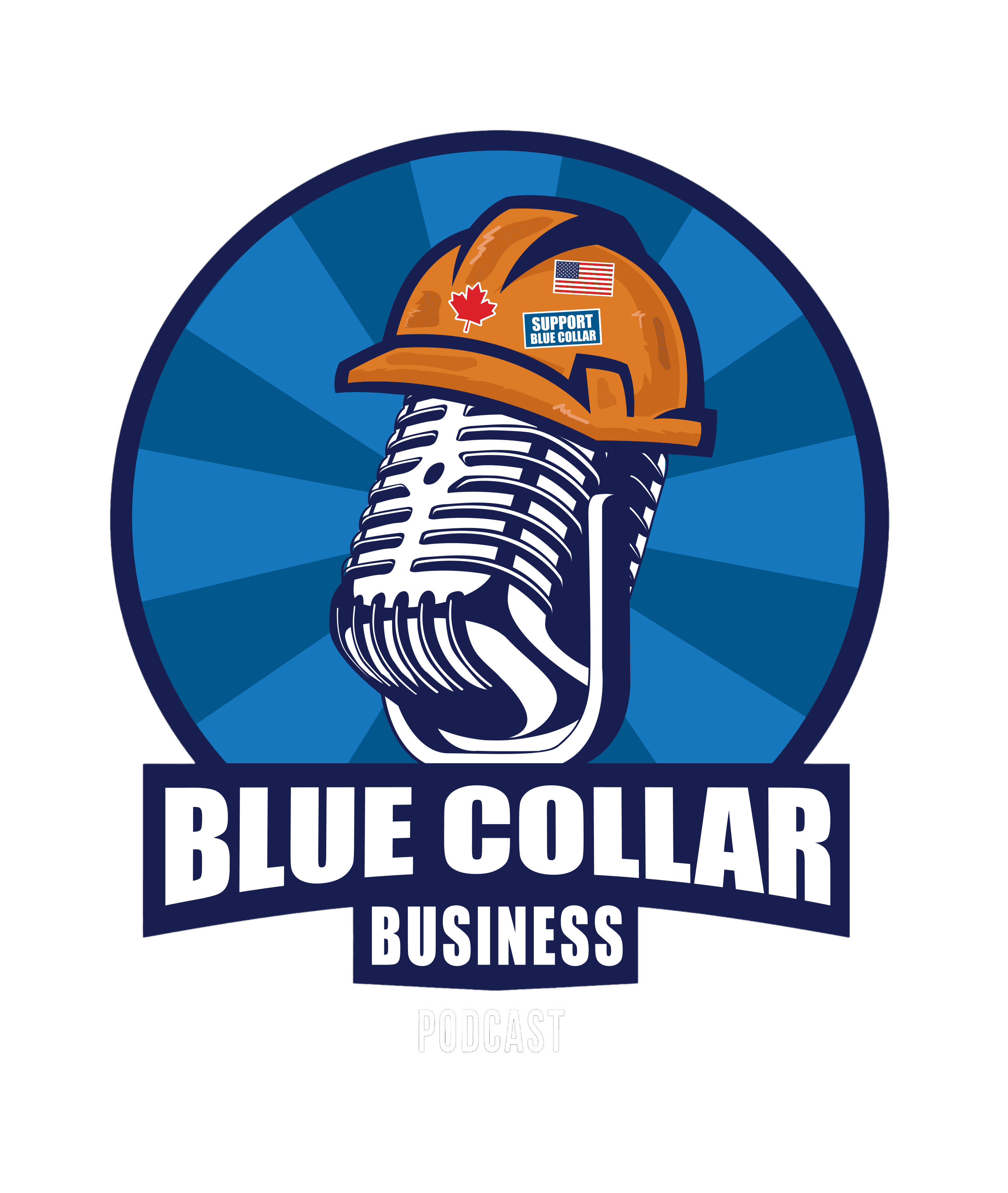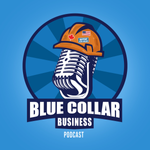What if your workers treated every dollar of your labor budget as if it were their own money? In this eye-opening conversation, Michael Fortinberry, co-founder and president of Protiv, reveals the fundamental flaw in how blue-collar businesses compensate their workforce – and how to fix it.
The contradiction is startling: contractors bid jobs based on production rates and material quantities, then pay their workers by the hour – essentially rewarding them for taking longer. "Their incentive is linked to time, the very thing that is the antagonist toward our success," Michael explains. This misalignment creates an adversarial relationship between management goals and worker compensation.
Performance-based pay offers a powerful alternative. By sharing the savings from under-budget jobs with the workers who created those efficiencies, companies transform their culture from merely putting in time to actively seeking better ways to complete projects. The results are revolutionary – crews begin holding each other accountable, equipment maintenance improves, and quality increases as workers see a direct financial benefit from doing things right the first time.
Host Sy Kirby shares his own journey toward implementing this model in his underground utilities company, highlighting the challenges of establishing the accounting and production tracking systems necessary to make it work. Michael emphasizes that successful implementation requires mastering your numbers through solid estimating and job costing, then building transparency around budgets and goals.
The conversation explores how Protiv software manages the legal complexities of performance bonuses while integrating with existing construction management platforms. More importantly, it addresses the cultural transformation required – authentic leadership, clear communication, and patience through the transition period when some workers inevitably resist the change.
Want to discover how performance pay could revolutionize your construction business? This episode delivers practical insights that could transform your profitability and workplace culture.
Follow and stay connected:
Never miss an update—follow, subscribe, and join the conversation!
More About this Episode
How Pay-for-Performance is Revolutionizing Blue-Collar Business: Lessons from Protiv and the Blue Collar Business Podcast
The conversation between Sy Kirby of the Blue Collar Business Podcast and Michael Fortinberry, co-founder of Protiv, is more than a podcast episode—it’s a deep dive into one of the most transformative concepts in the trades industry today: pay-for-performance (P4P). For every business owner or manager who's ever wondered why hourly pay seems to encourage the bare minimum, this discussion delivers insight, strategy, and a clear path forward.
The Hourly Pay Trap: Why Traditional Compensation is Failing Us
Hourly pay is deeply entrenched in blue-collar work. Yet, as Michael Fortinberry notes, “Four out of five people in our industry are paid by the hour—but that model incentivizes time, not outcomes.” This is a major contradiction. In construction and trades, we estimate jobs based on units—linear feet, yards, or square footage—yet we pay employees by the hour.
This disconnect is not just inefficient—it’s expensive.
“You get a free brain with every employee,” Michael quips. But hourly pay doesn’t encourage that brain to show up to work. It rewards clocking in, not critical thinking or teamwork.
The Alternative: Pay-for-Performance in Action
Pay-for-performance, or performance-based compensation, turns this broken model on its head. Instead of rewarding employees for time spent, it rewards them for value created. As Sy Kirby described from personal experience, this approach is not just theoretical—he’s moving his company, Sy-Con Excavation & Utilities, toward a structure where bonuses are tied directly to job efficiency and profitability.
How It Works:
- Start With Solid Estimating: You need to know your numbers. Period. That means understanding job costing, setting realistic production rates, and forecasting labor budgets.
- Track Real-Time Progress: Give field teams visibility into how they’re doing. With apps like Protiv, workers can literally see how much bonus money they’ve earned by the hour or day.
- Share the Savings: If a team completes a job under budget, a portion of those savings is shared back with them as a bonus. If they don’t, they still get their base hourly wage.
“The performance pay part of it comes from the savings,” Fortinberry explains. “It’s the easiest money you’ll ever spend as a business owner.”
Transparency is King: Building a Culture That Performs
Pay-for-performance isn’t just about a new pay structure—it’s about culture. Fortinberry and Kirby both emphasize that for this model to work, employees must understand the “why” behind their tasks. That starts with transparency.
Show your crews the labor budgets. Let them see what their production goals are. Give them ownership.
“We want our guys asking, ‘Are we making money on this job?’” Michael says. “Because when they ask that, they’re thinking like owners.”
This cultural shift brings peer accountability into play. Team members start holding each other responsible. They call out delays, inefficiencies, or poor performance—not out of spite, but because everyone is literally invested in the outcome.
Overcoming the Fear: What If It Goes Wrong?
A major concern for business owners—especially newer ones—is what happens if you implement P4P and can't make the numbers work?
Sy addressed this head-on.
“I always feared dangling that carrot and then not being able to pay it,” he says.
The key is preparation. Fortinberry stressed the need to get your financial house in order first. That means:
- Dialing in your accounting systems
- Understanding your job costs
- Creating realistic production benchmarks
Once that groundwork is laid, the bonus structure pays for itself. You’re only giving away a portion of the money you’re saving through greater efficiency.
Expect Attrition—And That’s Okay
Fortinberry also points out a critical truth: not everyone will survive the transition. Some employees—those who’ve gotten comfortable underperforming—will leave. And that’s a good thing.
“You might lose 20% of your people. They won’t want the accountability,” he says. “But that peer pressure is exactly what drives higher-performing crews.”
The people who stay? They’ll be your true builders. The ones who buy into the vision, who get excited about earning more by doing better, and who help foster a winning culture.
Tech + Culture = Scalability
Protiv’s platform ties it all together. It integrates with time-tracking systems like QuickBooks Time, Procore, and BuilderTrend. It automatically compares estimated vs. actual performance, calculates bonuses, and gives workers a mobile dashboard to track their earnings in real-time.
This transparency makes the compensation model self-regulating and motivating. It also makes it legally compliant—a key concern, especially in states like California where labor laws are complex.
“If you’re running a bonus program in Excel, you’re probably doing it wrong—at least legally,” Fortinberry warns.
Takeaway for Blue-Collar Leaders: One Small Change Starts It All
When asked for one piece of advice for a blue-collar worker or owner stuck in the mud, Fortinberry’s answer was deceptively simple:
“Get up early. Use that time to get your head straight. That’s your time—own it.”
That mindset is the foundation of the P4P model. It’s about ownership—over your time, your performance, and your outcomes.
Final Thoughts: This Isn’t a Dream. It’s the Future.
If you're an owner grinding through 70-hour weeks with mediocre results, this conversation should be a wake-up call. Pay-for-performance isn’t a Silicon Valley idea trying to make its way into the trades. It was built by contractors, for contractors, and it's already working.
Want your team to take initiative? Want less burnout and more buy-in? Want higher profits and better retention?
The path isn’t mystery—it's mastery. Know your costs, set clear goals, communicate transparently, and reward results.



Member discussion: